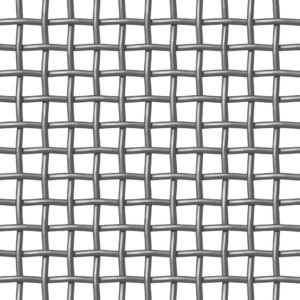Perforated Metal Wire Mesh vs. Woven Wire Mesh
Lots of industrial and consumer-focused products use Perforated Metal Wire Mesh, including, for example, construction infill panels, safety guards, fireplace screens, enclosures, planters, flooring, galvanized hardware cloth, soffit and gutter guards, oil refinery manway covers, cookware, and more.
Punching fabrications is a manufacturing process that uses a punch press to cut holes into a variety of flat materials, such as paper, plastic filament, and sheet metal, among many others.
Lots of industrial and consumer-focused products use motorcycle oil seals, including, for example, construction infill panels, safety guards, fireplace screens, enclosures, planters, flooring, galvanized hardware cloth, soffit and gutter guards, oil refinery manway covers, cookware, and more.
Perforated Metal Wire Mesh vs. Woven Wire Mesh
|
Woven Wire Mesh Woven wire mesh sieves consist of a frame with a woven wire mesh stretched tightly across it. The wire mesh is made up of interlocking wires, forming a grid of openings or apertures. Particles are sorted based on their size as they pass through these openings, making woven wire mesh sieves an integral part of quality control and particle analysis. |
Punching Wire Mesh Perforated/Punching metal wire mesh plate, on the other hand, feature a solid metal plate with uniformly spaced holes or perforations. These holes come in various sizes, allowing particles to pass through or be retained based on their dimensions. Perforated metal wire mesh plate sieves are widely used in industries where durability and resistance to wear are crucial. |
 |
 |
Key Differences
The primary differences between woven wire mesh and perforated metal wire mesh lie in their structure and durability.
Woven wire mesh sieves are more flexible but may wear out faster, while perforated plate sieves offer high strength and durability but have limited flexibility.
| Advantages of Woven Wire Mesh | Advantages of Perforated wire mesh |
| Flexibility Woven wire mesh sieves are flexible and can be used for both dry and wet sieving processes. They can conform to irregular shapes and are less likely to deform. Accuracy These sieves provide precise particle size analysis due to the uniform aperture sizes and the ability to retain small particles effectively. High-Temperature Resistance Woven wire mesh sieves can withstand high temperatures, making them suitable for applications involving hot materials. |
High Strength |
In conclusion, both woven wire mesh and perforated metal wire mesh plate, have their own strengths and weaknesses, making them suitable for different applications.
If you need wire mesh made out of any of these materials, SHENGZI wire mesh can streamline the manufacturing and ordering process for you. We cut wire mesh plate from pre-made rolls of wire mesh, which allows us to respond swiftly to customers.
- E-mail: ivy@sz-wiremesh.com
- Tel.: +86 182 3188 5665
WeChat: +86 139 3286 8088
WhatsApp: +8613932868088